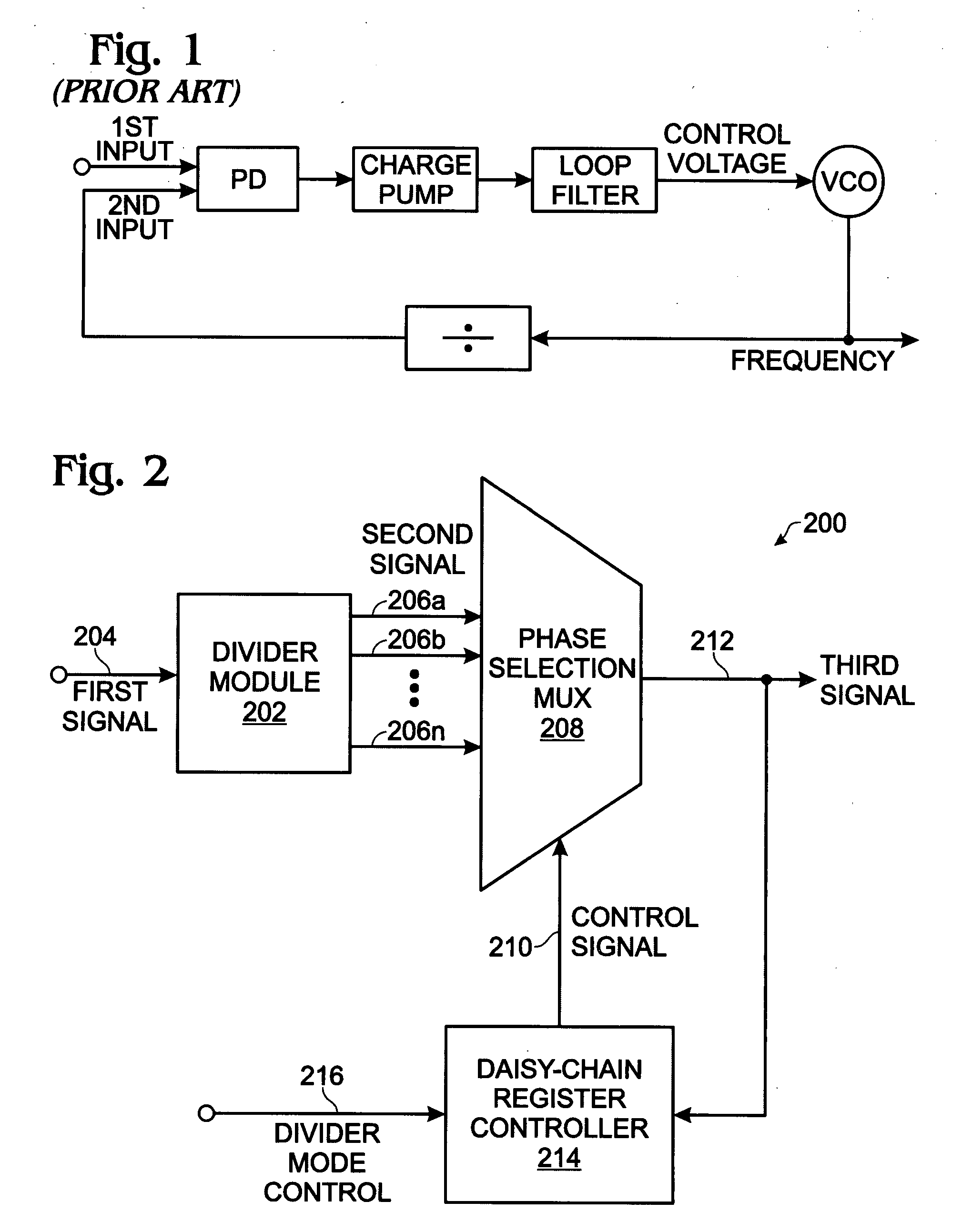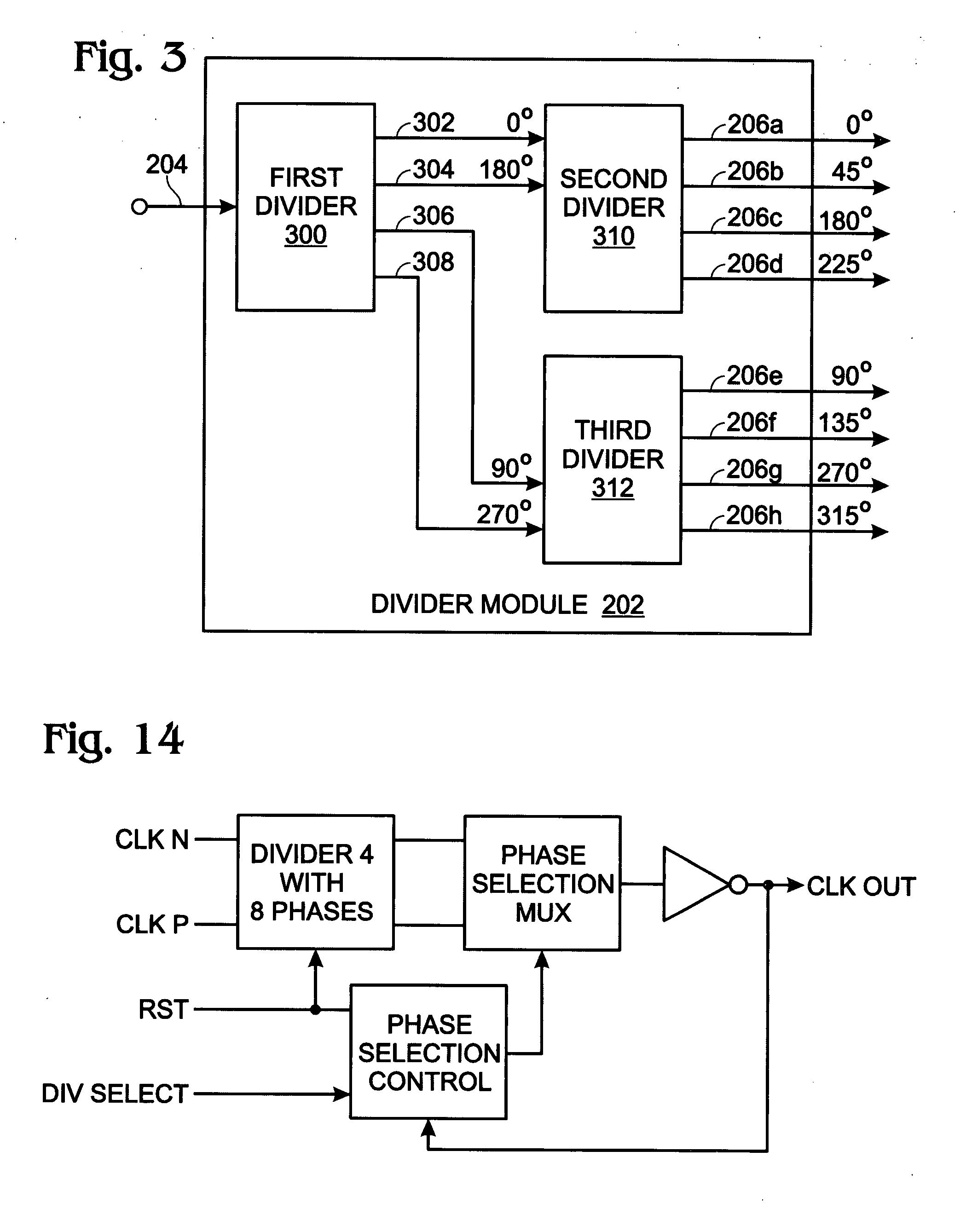High speed multi-modulus prescalar divider
a multi-modulus, prescalar technology, applied in the field of electronic circuitry, can solve the problems of not being able to conveniently generate every required frequency, the pulse-swallowing technique may generate undesirable harmonic frequency components, etc., and achieve the effect of high-speed input signals, low power consumption, and no glitches
- Summary
- Abstract
- Description
- Claims
- Application Information
AI Technical Summary
Benefits of technology
Problems solved by technology
Method used
Image
Examples
Embodiment Construction
[0026]FIG. 2 is a schematic block diagram of a system for multi-modulus division. The system 200 comprises a divider module 202 having an input on line 204 to accept a first signal having a first frequency. Referencing FIG. 1 briefly, line 204 may be a VCO output for example. The divider module 202 divides the first frequency by an integral number and supplies a second signal with a plurality of phase outputs on line 206, each having a second frequency. Phase output lines 206a through 206n are shown, where n is not limited to any particular number.
[0027]A phase selection multiplexer (MUX) 208 has an input on lines 206 to accept the plurality of second signal phase outputs, and an input on line 210 to accept a control signal. The phase selection multiplexer 208 has an output on line 212 to supply a second signal phase selected in response to the control signal on line 210. A daisy-chain register controller 214 has an output on line 210 to supply the control signal for dynamically sel...
PUM
 Login to View More
Login to View More Abstract
Description
Claims
Application Information
 Login to View More
Login to View More - R&D
- Intellectual Property
- Life Sciences
- Materials
- Tech Scout
- Unparalleled Data Quality
- Higher Quality Content
- 60% Fewer Hallucinations
Browse by: Latest US Patents, China's latest patents, Technical Efficacy Thesaurus, Application Domain, Technology Topic, Popular Technical Reports.
© 2025 PatSnap. All rights reserved.Legal|Privacy policy|Modern Slavery Act Transparency Statement|Sitemap|About US| Contact US: help@patsnap.com



